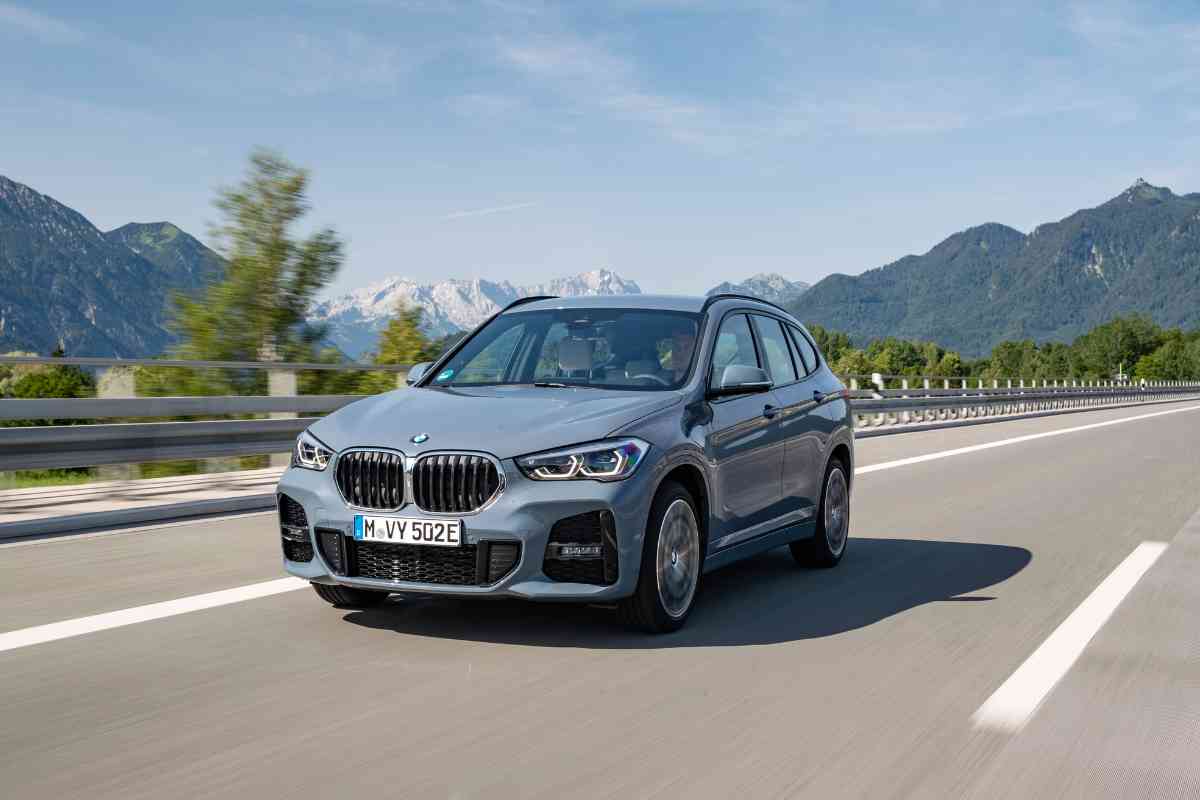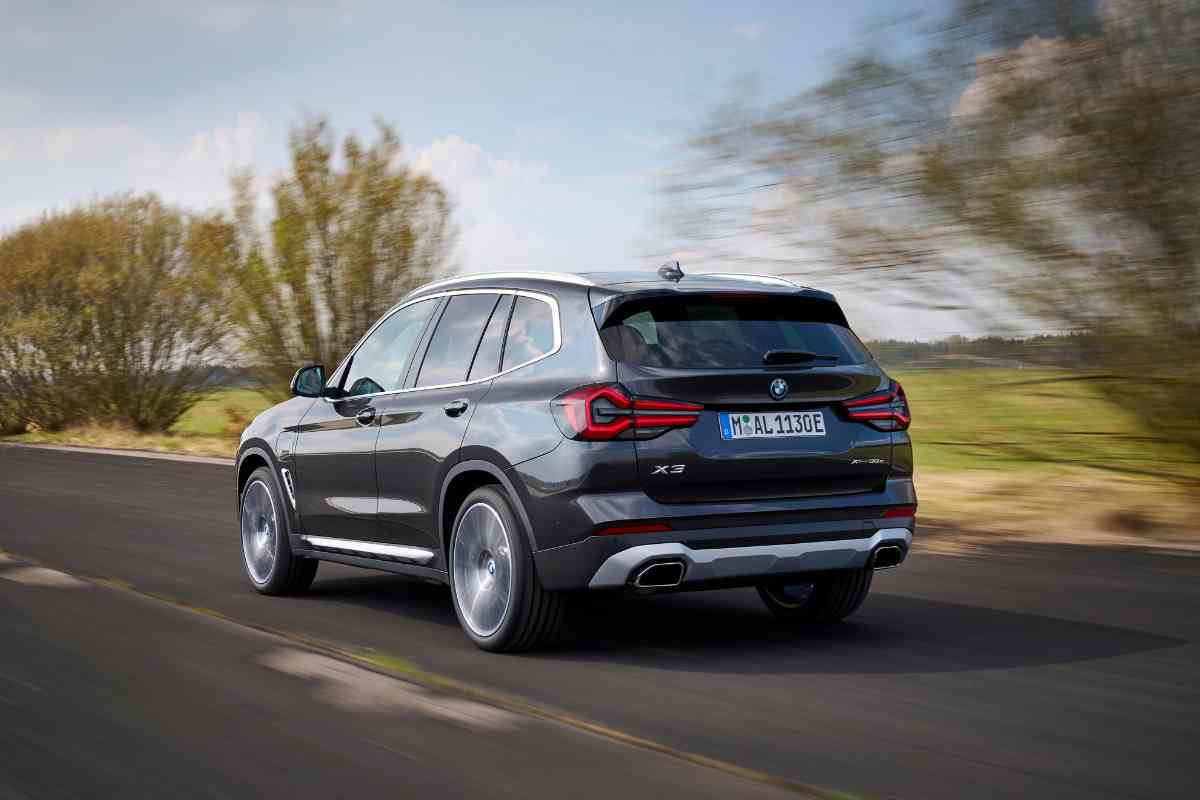XDrive Explained: Unleashing the Power of All-Wheel Drive Technology
BMW’s xDrive system is an advanced all-wheel-drive technology that boosts vehicle stability and traction under various conditions, marking a significant advancement over traditional all-wheel drives.

Related Post! Traction Control Explained!
What’s xDrive?
BMW’s xDrive is an advanced all-wheel-drive (AWD) system designed to enhance vehicle stability and traction across various driving conditions. It intelligently adjusts power distribution between the front and rear wheels, optimizing grip and handling. xDrive ensures dynamic performance and improved safety, making it a key feature in BMW’s pursuit of driving excellence.
By intelligently distributing power to the wheels that most need it, xDrive enhances the driving experience, offering greater control on challenging terrains or in adverse weather. This system quickly adapts by analyzing road conditions and driver inputs, shifting power between front and rear axles in moments, thus ensuring superior handling and safety.
Essential Insights
- xDrive significantly improves traction and stability in BMW vehicles.
- Adapts power distribution dynamically based on changing driving conditions.
- Regular upkeep is crucial for maintaining xDrive’s efficiency and performance.
xDrive Explained
Synonymous with performance and innovation, BMW’s xDrive system is a testament to these qualities, providing sophisticated all-wheel-drive capabilities that elevate the driving experience.

How xDrive Works
Beyond a conventional all-wheel-drive, xDrive employs an intelligent mechanism to boost traction. Utilizing a multi-plate clutch system, it dynamically allocates power between the axles. Typically favoring a rear-bias (40% front, 60% rear) to maintain BMW’s iconic driving dynamics, it can swiftly redirect up to 100% of power to the axle with better grip upon detecting slip, thereby improving stability and maneuverability.
The Progression of xDrive
Since its 2003 debut, xDrive has consistently evolved across BMW’s model lineup. Today, it works in conjunction with BMW’s Dynamic Stability Control (DSC) to adjust power distribution instantly, tailoring to both the driving conditions and the vehicle’s dynamic needs.
This integration ensures a responsive drive that copes adeptly with both slick roads and dynamic cornering, underscoring BMW’s dedication to leading-edge performance and control as detailed in “The Ultimate Guide to BMW xDrive: All Your Questions, Answered.” This continued innovation reaffirms xDrive’s position as a benchmark in all-wheel-drive technology.
XDrive in BMW Models
BMW’s xDrive system elevates the driving experience by offering unmatched traction and stability across diverse driving scenarios. This section delves into the various BMW models equipped with xDrive and highlights the performance advantages of this advanced all-wheel-drive system.
BMW Models Featuring xDrive
Sedans and Coupes:
- BMW 3 Series
- BMW 5 Series
- BMW 7 Series
- BMW 8 Series Coupe
SUVs and SAVs:
For detailed information on which models offer xDrive as a standard feature or an option, refer to the comprehensive BMW xDrive guide.
Performance Advantages

Enhanced Traction
xDrive dynamically balances power between the front and rear axles as necessary, ensuring superior grip and control in various weather conditions.
Dynamic Stability
Integrated with Dynamic Stability Control (DSC), xDrive continuously assesses road conditions and driving patterns to stabilize your vehicle, correcting understeer or oversteer by redistributing power for a safer driving experience.
For an in-depth exploration of xDrive’s impact on driving, reviewing the technology behind BMW’s xDrive system is recommended.
Operating the xDrive System
BMW’s xDrive stands at the forefront of AWD technology, enhancing traction, handling, and stability for an intelligent driving experience. It proactively adjusts power distribution among the vehicle’s wheels in real-time.
xDrive Key Components
Transfer Case
This component is crucial to the xDrive system, dynamically allocating power between axles through an electronically managed multi-plate clutch for optimal power distribution.
Sensors
Equipped with a range of sensors, BMW vehicles monitor various parameters such as wheel speed, steering angle, and lateral acceleration, providing essential data for precise torque distribution.
Actuators
These components modify the multi-plate clutch’s pressure within the transfer case, quickly adapting power distribution to match the driving conditions.
Functionality and Handling

Traction Control
In slippery situations, xDrive swiftly adjusts, channeling more power to the wheels with the most traction to maintain driving stability.
Cornering
The system enhances cornering agility by accurately distributing power across wheels, minimizing understeer or oversteer and keeping you on your intended path.
Dynamic Stability
xDrive ensures vehicle stability on uneven terrain or during abrupt movements, providing a smoother and more controlled driving experience.
Troubleshooting XDrive
When facing issues with your BMW’s xDrive system, addressing them swiftly is crucial for preserving your vehicle’s performance and safety. Troubleshooting involves recognizing common problems and applying diagnostic techniques to identify and remedy the faults.
Typical xDrive Challenges
Transfer Case Complications
A pivotal element of the xDrive system, transfer case malfunctions can lock your BMW in a particular drive mode. Warning signals, unusual noises, and fluid leakage are common indicators. Exploring resources on BMW xDrive difficulties can offer additional insights.
Drivetrain Hitches
Drivetrain troubles can affect power distribution and vehicle stability. These may stem from a malfunctioning transfer case or damaged drivetrain parts. For an in-depth analysis, consulting guides on prevalent xDrive issues is beneficial.
Diagnostic Strategies
Warning Light Assessment
Start diagnostics by examining the dashboard for warning lights, which can provide essential diagnostic codes to pinpoint the problem.
Fluid Level and Quality Inspection
Checking the fluid levels and condition in the xDrive system is crucial. Discrepancies in fluid levels or quality may signal leaks or wear in components.
Expert Diagnosis
For accurate problem identification within the xDrive system, employing a professional diagnostic tool is key. A professional evaluation can expedite troubleshooting, ensuring the correct issue is addressed.
Maintaining the xDrive System
To guarantee the xDrive system’s optimal functionality and durability, adhering to a maintenance regimen and understanding care practices is vital.

Routine Maintenance Schedule
Fluid Servicing
Every 30,000 to 60,000 miles, it’s essential to inspect and possibly replace the xDrive system’s fluids to avert issues from fluid deterioration.
- Transfer case oil
- Front and rear differential oil
Component Inspection
Regular checks of xDrive parts can identify early signs of damage or wear. Focus on examining:
- Drive shafts
- Seals
- Boots
Long-Term Care Tips
Tire Management
Ensuring uniformity in tires (brand, model, tread depth) reduces stress on the xDrive system.
- Rotate tires every 6,000 to 8,000 miles
Driving Practices
Moderating driving behaviors like rapid starts, abrupt stops, and quick turns can lessen strain on the xDrive system.
Following these maintenance and care recommendations will help maintain the xDrive system’s reliable all-wheel drive traction over time.
XDrive Alternatives
When deliberating on an all-wheel-drive (AWD) system for your vehicle, BMW’s xDrive system is celebrated for its exceptional performance. However, it’s not the lone choice available. Numerous alternatives exist that boast comparable functionalities and benefits.
Comparing AWD Systems
BMW’s xDrive system excels in dynamically adjusting power between the front and rear wheels. In contrast, Audi’s Quattro system has a celebrated history in AWD technology, often favoring a more rear-biased power allocation.
Mercedes-Benz’s 4MATIC rivals closely, offering robust traction and stability under varied driving conditions. Subaru’s Symmetrical AWD, known for its balanced architecture and standard availability across most models, provides a dependable and cost-effective option for many drivers.
Advantages and Disadvantages of xDrive Compared to Other Systems
xDrive Pros:
- Enhanced Traction: Delivers superior handling on slick and irregular terrains through smart torque distribution.
- Dynamic Performance: Optimizes driving dynamics, both in cornering and acceleration, by adjusting power distribution for a sportier drive.
Cons Compared to Other Systems:
- Cost: While systems like Subaru’s Symmetrical AWD are often standard, xDrive typically incurs an additional cost.
- Complexity: The sophisticated nature of xDrive might lead to pricier maintenance compared to simpler AWD systems.
Looking Ahead: The Future of xDrive
As automotive technology advances, BMW’s xDrive system is at the forefront of innovation, especially with the move towards vehicle electrification. This evolution promises to enhance the driving experience significantly.
Advancements in AWD Technology
BMW’s xDrive is poised for significant technological progress, with upcoming enhancements expected to offer even more refined handling and traction control. Through the integration of advanced sensors and electronic systems, xDrive will be able to adapt to changing road conditions and driver inputs with unprecedented speed, ensuring superior performance in a broader range of scenarios.
BMW and Electrification of xDrive
BMW’s dedication to electrification is clear in its newest models, such as the 2024 BMW X5 xDrive50e, which combines electric propulsion with intelligent AWD capabilities. This move towards electrification suggests that future xDrive-equipped BMW vehicles will not only be more environmentally friendly but will also continue to offer the dynamic driving experience BMW is known for.
